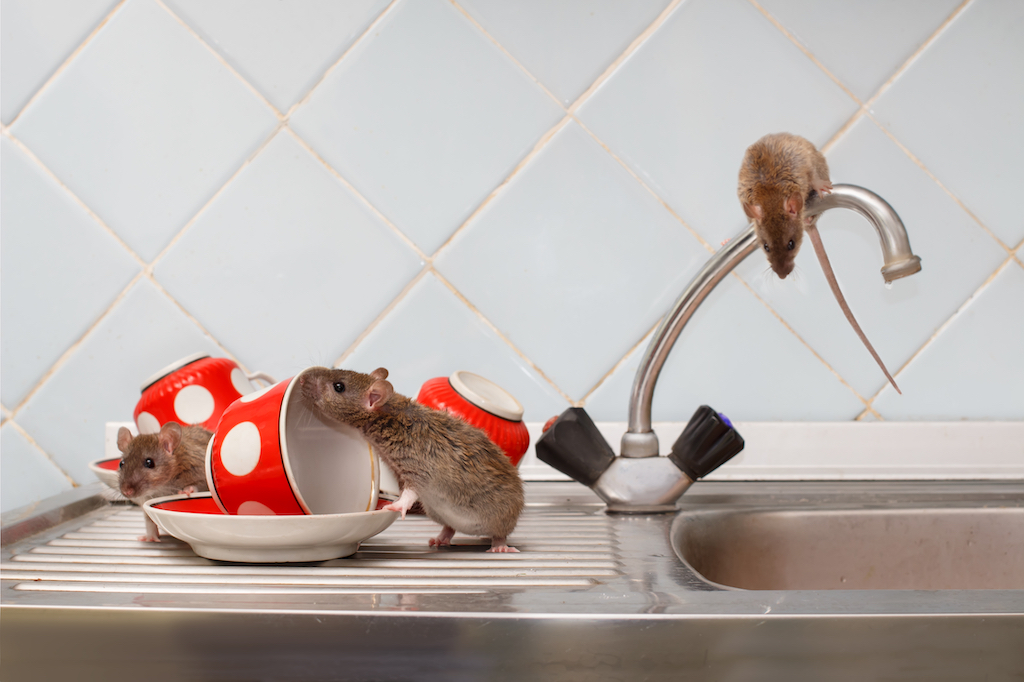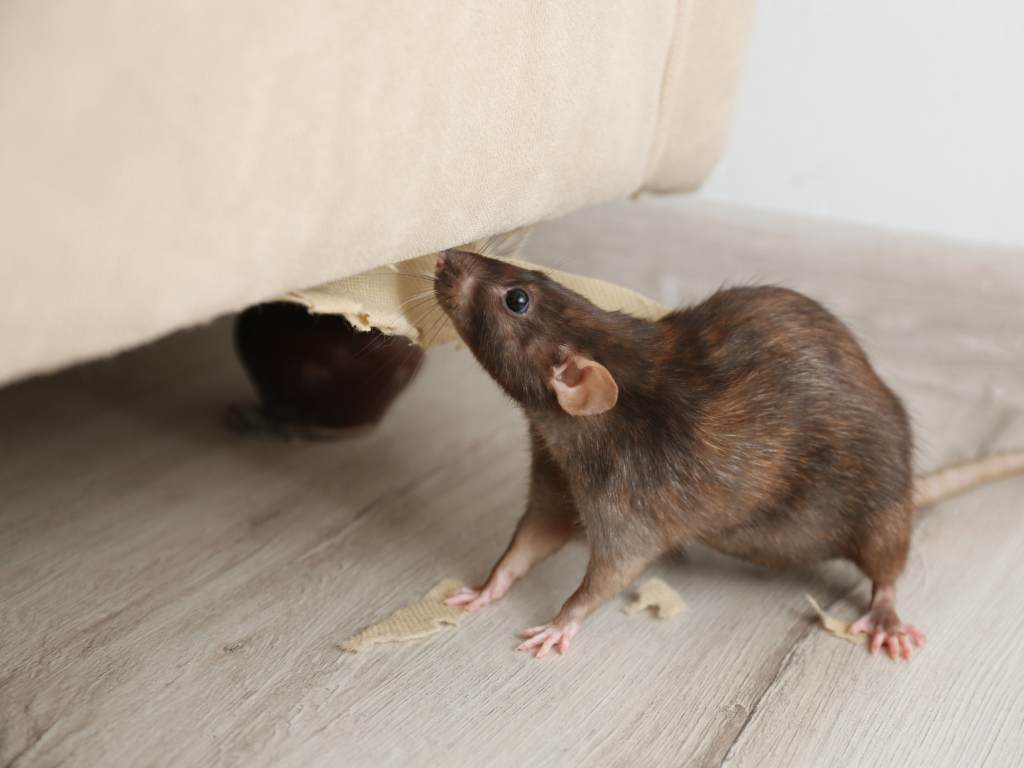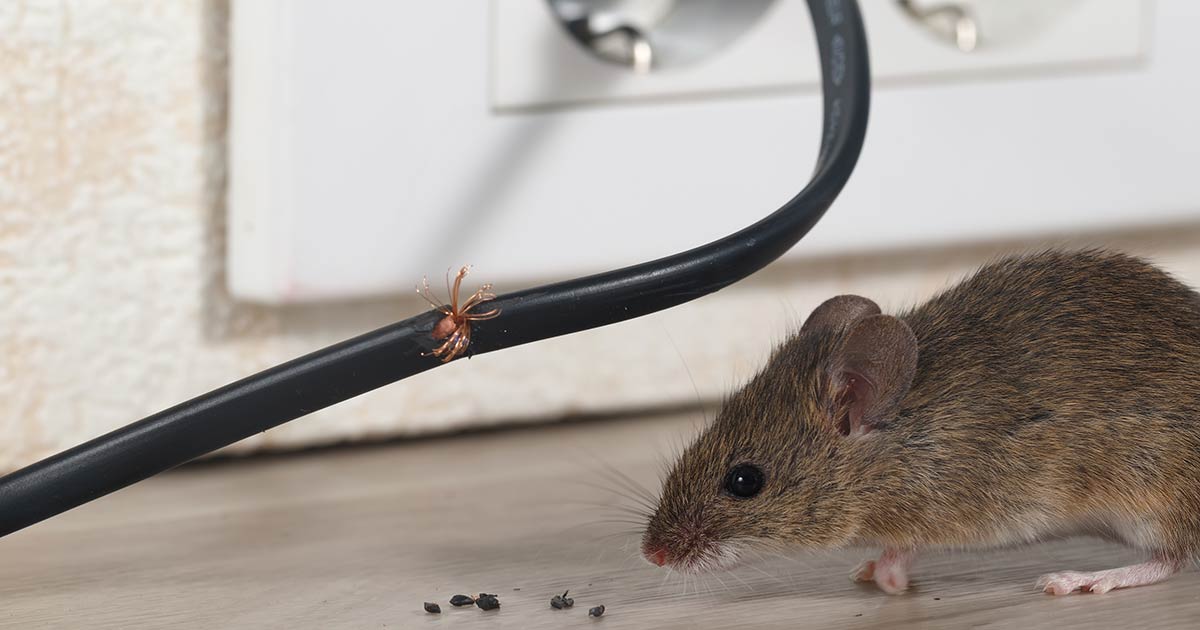Florida’s subtropical environment—marked by gentle winters, pervasive humidity, and warm temperatures—lets rodents like mice and rats thrive continuously. In Ocala, a central Florida hub blending suburban growth with equestrian traditions, these pests can enter unnoticed, exploiting small entry points, unsealed food, or moisture sources to establish nests behind walls or in attics. This service page details why rodents flourish in Florida’s conditions, how to recognize a potential infestation, and why calling a professional rodent exterminator remains the most effective way to secure your property against these resourceful, rapidly breeding intruders.
Whether you reside in Ocala or manage homes or businesses in the nearby communities of Summerfield, Dunnellon, or Belleview, spotting rodent indicators early—and employing targeted solutions—prevents widespread colonies, occupant worries, and repeated do-it-yourself attempts that rarely eliminate all hidden nests or pups.
Why Rodents Thrive in Florida
Mild Winter Temperatures
Freezing weather in northern states often slows or stops rodent reproduction for months. Florida’s mild cold season almost never plunges below freezing, meaning mice and rats continue breeding year-round. Climate-controlled interiors (roughly 65–85°F) further ensure they face no seasonal downtime, allowing near-constant feeding, nesting, and mating.
Plentiful Food and Water
Rodents adapt to any food source—from pantry crumbs and open pet bowls to unsealed trash bins or leftover scraps. In suburban areas around Ocala, occupant lifestyles occasionally leave these easy meals if vigilance slips. Even minor leaks under sinks, condensation near AC units, or lawn irrigation ensures rodents remain hydrated, fueling uninterrupted population growth.
Quick Reproduction
A single female mouse may birth multiple litters annually, each containing several pups that reach sexual maturity within weeks. Overlooking droppings or fresh gnaw marks easily escalates into large infestations behind walls or in multiple rooms if occupant or professional intervention isn’t undertaken swiftly.
Hidden Entryways
Rodents slip through dime-sized gaps around foundations, door sweeps, or utility penetrations. In older or inadequately sealed buildings, they can lodge behind drywall, in basements, or attic corners, undetected until droppings or nighttime noises point to deeper infiltration.
Daily Movement of Goods and Occupants
Florida’s robust commerce, tourism, and occupant turnover constantly shuffle boxes or secondhand items. Mice or rats might hitch rides across property lines, arriving in new locations unseen. Multi-unit buildings or short-term rentals near Dunnellon or Belleview inadvertently pass rodents between occupants if occupant or staff checks aren’t consistent.

Telltale Signs of a Rodent Infestation
- Droppings
- Small, rod-shaped pellets (about ¼ inch) typically found near food sources, baseboards, or hidden corners.
- Fresh droppings appear dark and moist, older ones grayish or crumbly.
- Small, rod-shaped pellets (about ¼ inch) typically found near food sources, baseboards, or hidden corners.
- Nocturnal Scratching or Squeaking
- Mice forage at night, producing faint rustling or squeaking noises behind walls, ceilings, or under floors.
- Frequent activity often signals a sizable colony.
- Mice forage at night, producing faint rustling or squeaking noises behind walls, ceilings, or under floors.
- Gnaw Marks
- Rodents must chew to control constantly growing incisors, leaving ragged edges in cardboard, plastic packaging, or even wiring.
- Check for partially eaten goods or small holes in pet food bags.
- Rodents must chew to control constantly growing incisors, leaving ragged edges in cardboard, plastic packaging, or even wiring.
- Shredded Nest Materials
- Bits of paper, fabric, or insulation assembled into nests in closets, crawl spaces, or attics.
- Droppings, a stale odor, or rub marks nearby indicate active residency.
- Bits of paper, fabric, or insulation assembled into nests in closets, crawl spaces, or attics.
- Strange Pet Behavior
- Cats or dogs staring intently at walls, barking at empty corners, or pawing under doors may sense rodent movements occupant ears can’t detect.
- Sudden pet focus on a once-ignored area frequently reveals concealed mice or rats.
- Cats or dogs staring intently at walls, barking at empty corners, or pawing under doors may sense rodent movements occupant ears can’t detect.
- Musky or Ammonia-Like Odor
- Accumulated droppings or urine produce a stale scent, especially potent in unventilated rooms.
- The stronger the odor, the larger or more extended the infestation likely is.
- Accumulated droppings or urine produce a stale scent, especially potent in unventilated rooms.
Risks of Neglecting Rodents
Disease and Contamination
Rodents transmit pathogens (like salmonella) in feces, urine, or saliva. Contaminated countertops, stored food, or utensils raise occupant illness risks. Breathing in dust from dried droppings can also harm occupant respiratory health.
Structural and Electrical Hazards
Mice and rats gnaw wooden beams, drywall edges, or wiring insulation. Frayed wires behind walls can lead to short circuits or potential fires, forcing costly property repairs or occupant displacement.
Rapid Breeding
Florida’s gentle cold season allows continual rodent reproduction. A small presence can multiply into dozens throughout multiple rooms unless occupant detection or professional extermination halts them promptly.
Secondary Pest Complaints
Rodent nests occasionally host fleas or ticks, aggravating occupant difficulties if these parasites spread to pets or people. Larger predators (like feral cats or snakes) might roam near buildings chasing rodents, bringing additional occupant or manager headaches.
Reputational Harm
For short-term rentals or businesses near Belleview or Summerfield, occupant sightings prompt negative reviews or occupant backlash. Homeowners likewise confront occupant stress or embarrassment over unsanitary conditions if rodents appear visibly in living spaces.

Why a Professional Rodent Exterminator Is Essential
Comprehensive Inspections
A rodent exterminator systematically checks behind appliances, in basements or attic corners, along plumbing lines, or near foundation cracks for droppings, nests, or gnaw marks. Determining if mice or rats are present clarifies trap type (snap traps vs. tamper-resistant stations) and product usage.
Strategic Baiting & Trapping
Professionals place snap traps, live traps, or enclosed bait stations in prime “rodent runways” (along baseboards, under sinks) to yield lethal results with minimal occupant or pet hazard. Random occupant attempts with uncontained poisons or poorly placed traps seldom achieve colony-wide success.
Regulated Rodenticide Usage
When needed, exterminators lock rodenticides inside bait stations, preserving occupant or child safety while ensuring rodents ingest lethal doses. Mice typically expire discreetly in nests or outside, saving occupants the burden of direct disposal. This approach surpasses scattered occupant poison usage endangering non-target animals.
Exclusion & Sealing
Eradicating existing mice or rats is half the solution. Exterminators identify cracks in walls, worn door sweeps, or utility gaps that fresh rodents exploit, guiding occupant or professional repairs. Sealing these holes cements a long-term barrier once the current infestation is cleared.
Follow-Up & Maintenance
Rodent pups can appear weeks after initial removal or newly arrived mice may discover an overlooked gap. Many exterminators schedule occupant calls or re-check visits if occupant sightings persist, tweaking baits or trap locations until occupant peace of mind is confirmed.
Typical Methods for Mice Treatments
- Inspection & Degree of Infestation
- Exterminators scan corners, behind appliances, attics, or basements for droppings, nests, or rub marks.
- Deciding if a limited area or multi-room coverage is needed guides whether to concentrate on local spots or the entire building.
- Exterminators scan corners, behind appliances, attics, or basements for droppings, nests, or rub marks.
- Trapping (Snap or Live)
- Snap traps effectively reduce adult populations quickly.
- Live traps see occasional use if occupant preferences or smaller issues demand them, but less typical for large-scale infestations.
- Snap traps effectively reduce adult populations quickly.
- Bait Stations
- Tamper-resistant boxes containing lethal rodenticides, placed discreetly to limit occupant or pet interaction.
- Mice nibble the poison, generally dying in hidden nest areas or outdoors.
- Tamper-resistant boxes containing lethal rodenticides, placed discreetly to limit occupant or pet interaction.
- Exclusion & Physical Barriers
- Occupants or professionals seal cracks around foundations, door sweeps, or pipe penetrations.
- Blocking future entry ensures mice can’t re-infiltrate once existing populations are removed.
- Occupants or professionals seal cracks around foundations, door sweeps, or pipe penetrations.
- Sanitation & Deodorizing
- Occupants store leftover food in sealed containers, discard clutter, and wipe counters or floors daily.
- Removing droppings and sanitizing nest sites erases pheromone trails drawing new rodents in.
- Occupants store leftover food in sealed containers, discard clutter, and wipe counters or floors daily.
- Decluttering & Organization
- Minimizing cardboard boxes or random piles in garages, closets, or basements denies mice abundant nesting materials.
- Transparent bins let occupants spot droppings or chew marks earlier.
- Minimizing cardboard boxes or random piles in garages, closets, or basements denies mice abundant nesting materials.
- Scheduled Follow-Up
- Weeks post-treatment, occupant sightings or droppings confirm if leftover pups or newly arrived mice appear.
- Re-baiting or further sealing cements occupant confidence no rodents remain hidden.
- Weeks post-treatment, occupant sightings or droppings confirm if leftover pups or newly arrived mice appear.
Service Areas: Ocala, Summerfield, Dunnellon, Belleview
Rodents inhabit Florida’s mild winters across multiple regions, but this page centers on solutions in Ocala, a central Florida city combining suburban expansions with equestrian culture. Our mice exterminator expertise also assists:
- Summerfield: Residential or rural living near Ocala, occupant or staff vigilance is crucial if leftover scraps or water persist.
- Dunnellon: Scenic river attractions see occupant or tourist traffic, possibly carrying mice if occupant or manager housekeeping is neglected.
- Belleview: A smaller city featuring older homes or expansions, each vulnerable to infiltration if occupant or building oversight fails.
Florida’s near-freezing-lacking winters allow mice to breed unabated, requiring occupant synergy plus specialized extermination to control or expel them thoroughly.

Why Choose Us
Florida-Tailored Tactics
We combine recognized rodent management—snap traps, bait stations, robust sealing—and occupant housekeeping in central Florida’s environment. By bridging occupant synergy (storing foods, removing moisture) with proven exterminator solutions, we produce long-term results beyond short-lived occupant attempts.
Detailed Surveys
Our technicians thoroughly examine basements, crawl spaces, or behind appliances for droppings, nests, or gnaw marks. Evaluating how many rodents or how many rooms are impacted clarifies whether partial or property-wide coverage is vital to occupant well-being.
Safe, Specific Product Use
We carefully place rodenticides in locked stations, preventing occupant or pet contact. Snap traps along walls ensure lethal captures swiftly. By confining rodent baits or traps to known runways, we minimize occupant chemical exposure while guaranteeing rodent kills.
Emphasis on Exclusion & Sanitation
Beyond removing current mice, occupant synergy—like sealing cracks, discarding leftover food promptly, or storing goods in sealed containers—blocks fresh rodents from reentry. This occupant plus professional alliance denies mice the resources they need to nest in Florida’s conducive climate.
Follow-Up & Reassurance
Rodent pups can appear weeks after initial extermination if occupant housekeeping remains unchanged or unsealed openings remain. Many exterminators re-check occupant feedback or re-visit if droppings re-emerge, refining solutions until occupant calm is final.
Next Steps
Seeing droppings along baseboards, hearing nighttime scratching in walls, or noticing gnawed cereal boxes in your pantry? Contact us to learn more or schedule your service. Our mice treatments for Ocala, Summerfield, Dunnellon, and Belleview combine thorough property inspections, precisely placed traps or rodenticides, occupant-led sealing and sanitation strategies, plus vigilant follow-ups—fully eliminating mice while thwarting future infestations.
Taking action swiftly saves occupant health from droppings-borne pathogens, protects wiring or wood from gnaw damage, and preserves occupant trust or brand if you manage rentals or businesses. With our Florida-specific rodent exterminator experience, we find, remove, and deter mice or rats in central Florida’s mild winter climate, ensuring occupant well-being in every season.
Maintaining a Mouse-Free Property
Once professionals have removed rodents, occupant diligence secures a rodent-proof home or business:
- Keep Food Sealed
- Store cereals, grains, or pet kibble in robust plastic or metal containers—thin cardboard is easily torn open.
- Clean counters daily, discarding crumbs or leftover scraps that entice mice.
- Store cereals, grains, or pet kibble in robust plastic or metal containers—thin cardboard is easily torn open.
- Eliminate Water Sources
- Repair dripping faucets, sprinklers, or AC lines.
- Vent moist rooms (laundry, bathrooms) to reduce humidity appealing to rodents.
- Repair dripping faucets, sprinklers, or AC lines.
- Cut Down Clutter
- Organized garages, basements, or attics with transparent bins reveal droppings or chewing promptly.
- Minimize cardboard boxes or random piles where mice can nest unseen.
- Organized garages, basements, or attics with transparent bins reveal droppings or chewing promptly.
- Manage Trash
- Use bins with secure lids, empty them frequently, and rinse out residues.
- Keep bins slightly away from exterior walls so mice can’t scurry in undetected.
- Use bins with secure lids, empty them frequently, and rinse out residues.
- Seal Entry Points
- Plug cracks around foundations, door sweeps, or utility penetrations with caulk, steel wool, or metal flashing.
- Even dime-sized holes suffice for mice to slip inside in search of warmth or food.
- Plug cracks around foundations, door sweeps, or utility penetrations with caulk, steel wool, or metal flashing.
- Schedule Pet Bowl Times
- Feed pets on a schedule; remove leftover kibble rather than leaving bowls out overnight.
- Store large pet food bags off floors in sealed containers, denying mice direct access.
- Feed pets on a schedule; remove leftover kibble rather than leaving bowls out overnight.
- Monitor & Re-Treat if Necessary
- If occupant sightings reoccur or fresh droppings show up, contact an exterminator swiftly—stopping a small infiltration from becoming a big colony.
- Re-checking corners or behind appliances ensures no hidden pockets remain.
- If occupant sightings reoccur or fresh droppings show up, contact an exterminator swiftly—stopping a small infiltration from becoming a big colony.
By combining occupant diligence—like sealing cracks, storing food properly, cutting clutter—and specialized mice treatments as needed, property owners in Ocala, Summerfield, Dunnellon, or Belleview effectively combat Florida’s mild winters that empower rodents to breed freely. This synergy ensures mice cannot reclaim your property, maintaining occupant comfort and structural integrity all year in central Florida’s conducive environment.
